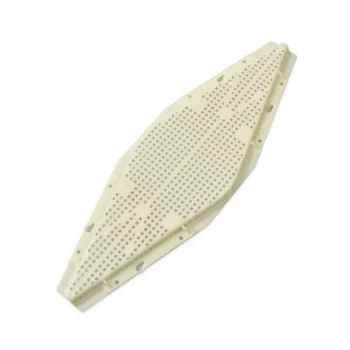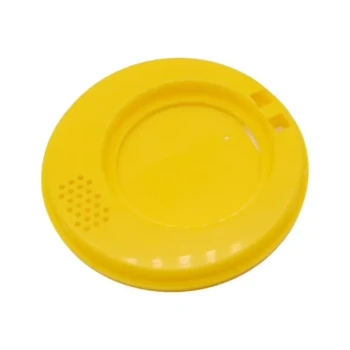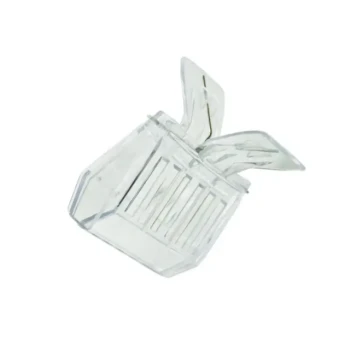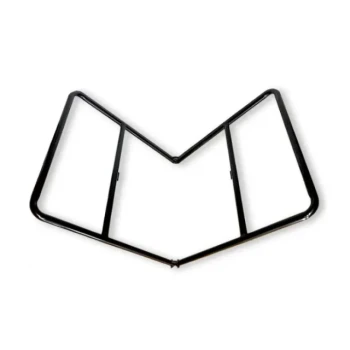For long-term durability and operational efficiency, metal queen excluders are superior to plastic. While plastic excluders offer a lower initial cost and are lighter, their tendency to warp and sag creates management issues that durable metal excluders avoid. Metal's rigidity ensures proper bee space is maintained, and its longevity makes it a more reliable investment over the life of your apiary.
Your choice between plastic and metal excluders is a direct trade-off between lower initial cost and long-term value. Metal is a one-time investment in reliability and ease of cleaning, while plastic is a budget-friendly option with known performance limitations.

The Case for Metal Excluders
Metal queen excluders are the standard for beekeepers who prioritize performance and durability. Their core advantages stem directly from the material's strength and stability.
### Durability and Longevity
A metal excluder is a long-term investment. With proper care, a single metal excluder can last for many years, often for decades, making its lifetime cost highly competitive.
### Superior Rigidity and Bee Space
This is the most critical advantage. Metal excluders sit perfectly flat across the top of the brood box and do not sag under their own weight or the weight of the bees. This maintains correct bee space, allowing workers to pass through freely without hindrance.
### Ease of Cleaning and Sterilization
Metal excluders can be cleaned easily by scraping off wax and propolis. More importantly, they can withstand heat from a blowtorch for sterilization, a fast and effective method that is impossible with plastic. They are also resistant to damage from gamma irradiation.
The Advantages of Plastic Excluders
Plastic excluders are popular primarily due to their accessibility and low cost, making them an attractive option for new beekeepers or those on a tight budget.
### Lower Initial Cost
Plastic excluders are significantly less expensive than their metal counterparts. This allows a beekeeper to equip multiple hives for a fraction of the cost of using all-metal equipment.
### Lightweight and Easy Handling
The lightweight nature of plastic makes it easier to lift and manipulate during hive inspections, reducing strain when working with many colonies.
### Thermal Properties and Pest Resistance
Plastic does not conduct heat or cold into the hive like metal can. Additionally, the smooth, molded design typically lacks the small crevices where pests like small hive beetles might otherwise hide.
Understanding the Trade-offs and Drawbacks
An objective decision requires understanding the inherent weaknesses of each material. The primary drawbacks are directly linked to the core properties of plastic and metal.
### The Problem with Plastic: Warping and Lifespan
The most significant issue with plastic excluders is their tendency to warp, sag, and deform over time, especially in the heat of the hive.
This sagging reduces the space between the excluder and the top bars of the frames below it. This restricts the movement of worker bees, creating a bottleneck that can reduce the efficiency of your honey supers.
Furthermore, plastic has a much shorter lifespan than metal and can become brittle with age.
### The Considerations for Metal: Cost and Weight
The main barrier to choosing metal is the higher upfront cost. While the long-term value is excellent, the initial purchase price can be a consideration for large-scale operations or hobbyists starting out.
Metal is also heavier than plastic, which can add up when you are lifting multiple honey-filled supers during an inspection.
Making the Right Choice for Your Apiary
The purpose of a queen excluder is to manage your colony efficiently, keeping the queen and brood out of your honey supers. The best material is the one that achieves this with the least amount of negative impact on the colony.
- If your primary focus is minimizing upfront costs or weight: Plastic excluders offer a functional, budget-friendly entry point for new or small-scale beekeepers.
- If your primary focus is long-term durability and hive productivity: Metal excluders are the superior investment, ensuring proper bee space and lasting for decades.
Ultimately, selecting the right excluder is about aligning your equipment with your operational goals and management style.
Summary Table:
| Feature | Plastic Excluder | Metal Excluder |
|---|---|---|
| Initial Cost | Lower | Higher |
| Durability & Lifespan | Prone to warping/sagging; shorter lifespan | Extremely durable; lasts for decades |
| Impact on Bee Space | Can sag, restricting worker bee movement | Rigid, maintains correct bee space |
| Cleaning & Sterilization | Difficult to clean thoroughly; cannot use heat | Easy to scrape and sterilize with a blowtorch |
| Weight | Lightweight | Heavier |
Equip your apiary with reliable, long-lasting equipment from HONESTBEE.
As a trusted wholesale supplier to commercial apiaries and beekeeping equipment distributors, we understand that your productivity depends on durable, high-performance tools. Our metal queen excluders are built to last, ensuring your hives operate efficiently season after season.
Let's discuss your needs: Contact our team today to get pricing and learn how our wholesale-focused operations can support your business's growth and success.
Visual Guide

Related Products
- Professional Plastic Queen Excluder for Modern Beekeeping
- Wooden Queen Bee Excluder for Beekeeping
- High Performance Plastic Queen Excluder for Beekeeping and Apiary Management
- Premium Wood Framed Metal Wire Queen Bee Excluder
- Plastic Queen Bee Excluder for Bee Hive Wholesale
People Also Ask
- What is a Queen Excluder and how does it work? Achieve Purer Honey & Better Hive Control
- How does a queen excluder work? Master Hive Management for Pure Honey Harvests
- What are the main advantages of using a queen excluder in beekeeping? Simplify Hive Management & Harvest
- What is the purpose of a queen excluder when adding a super? Streamline Your Honey Harvest
- What is the primary function of a queen excluder in beekeeping? Control Hive Layout for Efficient Honey Harvesting



















